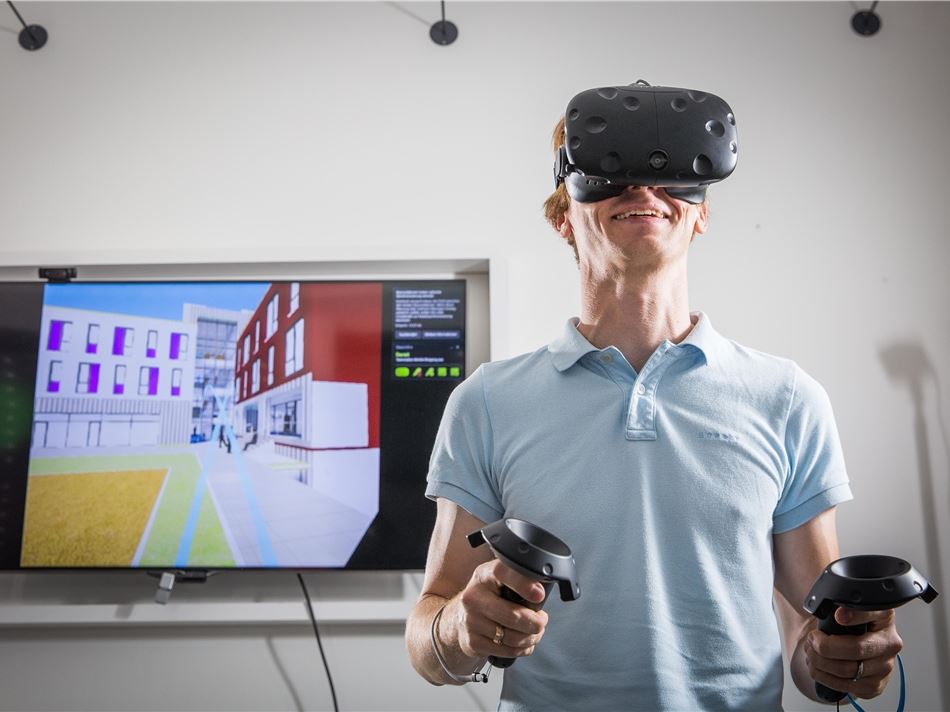Using software BIM: I can see what you can't see
The real estate industry has largely missed innovations. That should now change with digital construction planning.

The software specialist Tracetronic is growing fast. His company headquarters in Stuttgarter Straße, which was created five years ago, has long been too small. The managing directors Rocco Deutschmann and Peter Stähle are therefore planning a new building. Around eight million euros will be invested in this and space will be created for a new 160 employees. Currently, the company has about 190 employees. Construction is scheduled to start this year, and the move-in is scheduled for 2020. So that nothing goes wrong, the software specialist Tracetronic relies on modern construction planning.
The BIM method focuses on digitization and automation in planning and construction. "We expect a smooth construction process, cost savings and advantages in the subsequent maintenance," says IT Manager René Müller. Tracetronic is planning its new building together with the Dresden building specialist Innnius.
"For 20 years, we have been driving the digital editing of projects and have developed the appropriate tools and methods. For about five years, we have been using BIM to manage and use the data, "explains Innius CEO Peter Vogel. More than 150 employees of the company network, of which almost 70 in Dresden, cover all areas of technical building equipment. On the long list of references are impressive buildings nationwide.
Avoid mistakes early with BIM
A big BIM advocate is Christoph Gröner, namesake and CEO of CG Gruppe AG. He started introducing BIM into his group three years ago. The Carré Löbtau in Dresden with 143 apartments is currently being built using this method. As a major project developer, the CG Group is in a position to declare BIM as standard. For three-dimensional planning and digital project development come construction process management, performance control and the costs during the entire phase of use of a property. This leads to a targeted time management, enormous acceleration and detailed cost forecasting and tracking. The goal is ultimately to have a modular system. Gröner calls on other companies to "feed" the system with planning and components. Instead of person to person communication takes place via a central server. This way, everyone is always up to date, and information loss or misunderstandings are avoided. "We coordinate the work of the architects, structural engineers and TGA planners with the appropriate software. Your 3-D plans are superimposed on a 13-square-meter monitor wall to see if they fit together, "explains Gröner. This makes mistakes clear. "All that you normally see on the construction site can be seen at a much earlier point in time." Gröner is convinced that this will prevent planning errors such as those at Berlin Airport or cost explosions such as the Hamburg Philharmonic. Currently, 3,309 apartments are planned this way. By next year, the CG Group wants to include all its projects.
Gröner had started in 1988 with seven employees. Today, he has 479 operations at nine locations and achieved sales of € 1.27 billion last year. Although he benefits from the boom in the real estate industry, he appears as a critic. In his lectures, as recently in the Heuer dialogue in Dresden, he compares today's prices and costs with those of 1950. Then buyers have to pay eight and a half times more for a car. The salary of a secretary is 19 times higher, but the rent for an apartment is almost 30 times. In the automotive industry, productivity has risen by 80 percent over the past 20 years. In the construction industry, there was an increase of five to ten percent, and this was absorbed by higher requirements such as fire and sound insulation.
The construction industry was never ahead in terms of innovation, estimates Ullrich Bauch. He is managing director of the engineering company Kaiser Baucontrol. The company has locations in Berlin, Leipzig, Dresden, Munich and Vienna and, with 50 employees, offers project and real estate management as well as consulting and quality control. Bauch, since 2003 honorary professor of the Bauhaus University in Weimar, welcomes the initiative of Christoph Gröner. "That's commendable, but the initial spark must come from the public sector to find broad application," he claims. With the development of BIM there are great opportunities, but the data models must be compatible. Other countries are much further in this regard.
Bauch also works closely with the European Institute for Postgraduate Education (Eipos), a company of the TU Dresden AG. Its offers include further education as a BIM expert. For the third time, Eipos invites you to a specialist forum for digitization. The symposium in the World Trade Center on 21 September is titled "BIM mit Sicherheit!". "In Germany, we do not yet have any generally binding guidelines," explains BIM Product Manager Georg Knobloch. With the BIM developments ever larger amounts of data are being collected and used by a large number of participants. In the euphoria over transparency and agility in the implementation of digitally supported construction projects, the issue of security is almost inevitable, Knobloch says.
Source: https://www.sz-online.de/nachrichten/ich-sehe-was-was-du-nicht-siehst-4008179.html












